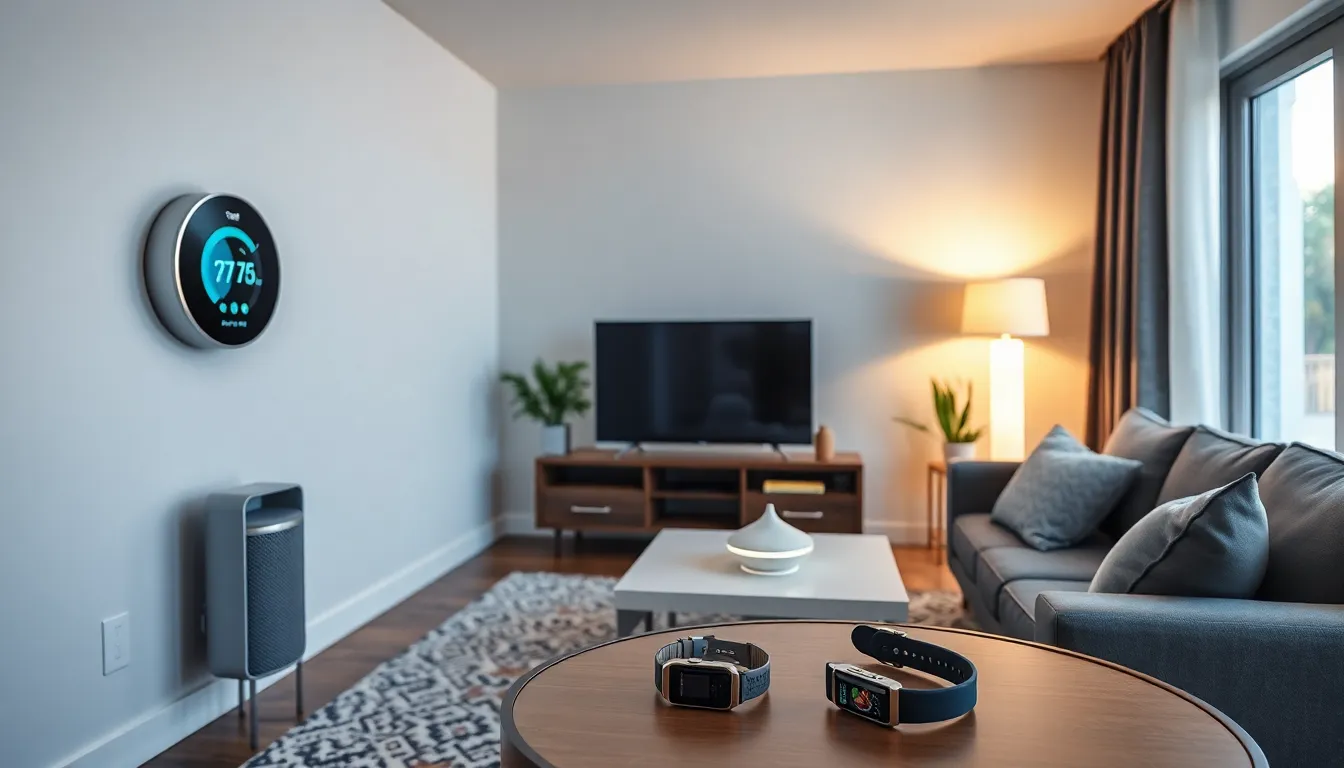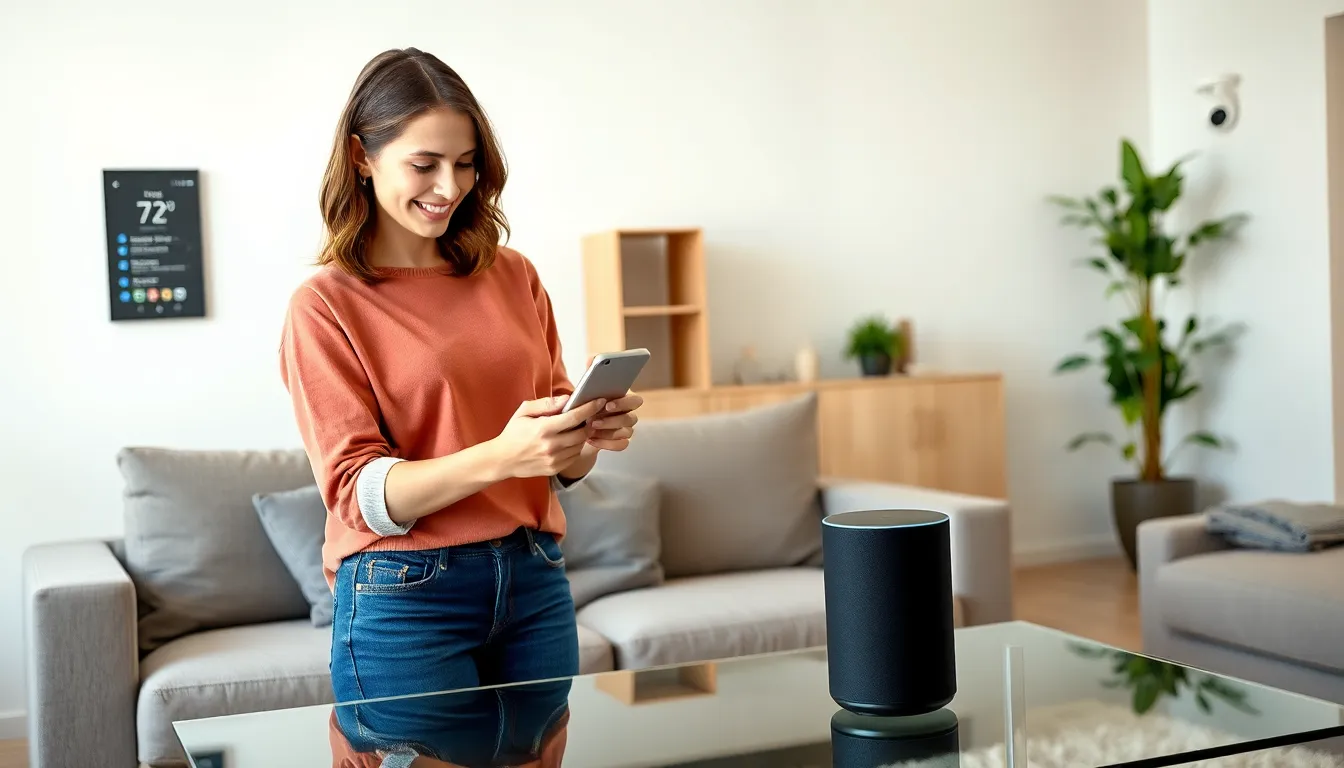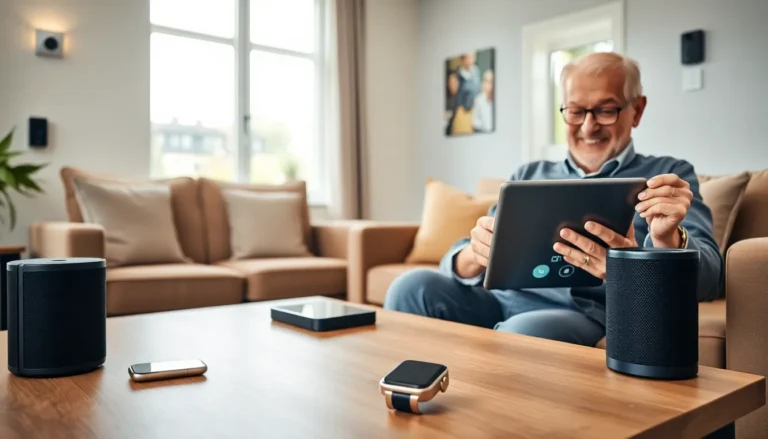In a world where technology evolves at lightning speed, intelligent gadgets have become an integral part of daily life. From smart home devices that automate mundane tasks to wearables that monitor health, these innovations are designed to make life easier and more efficient. As consumers increasingly seek convenience and connectivity, the demand for such gadgets continues to rise.
These intelligent devices not only enhance productivity but also offer personalized experiences tailored to individual needs. With advancements in artificial intelligence and machine learning, they learn user preferences and adapt accordingly. As they become more intuitive, intelligent gadgets are transforming how people interact with their environments, paving the way for a smarter future.
Table of Contents
ToggleOverview of Intelligent Gadgets
Intelligent gadgets refer to advanced devices that utilize artificial intelligence (AI) and machine learning to enhance user experience and convenience. Devices like smart speakers, home assistants, wearables, and connected appliances exemplify this trend. Each gadget leverages connectivity to streamline daily tasks while providing real-time data and insights.
Smart home devices include smart thermostats, which automatically adjust temperatures based on user habits, and smart security systems that monitor homes and send alerts about unusual activity. Wearables, such as fitness trackers and smartwatches, monitor health metrics and deliver notifications, allowing users to stay informed about their well-being.
Intelligent gadgets collect and analyze user data to deliver personalized experiences. For instance, voice-activated assistants learn user preferences over time, offering customized recommendations for music, recipes, or reminders. This adaptability fosters a seamless integration of technology into everyday life.
As innovation continues, manufacturers are introducing more intelligent gadgets that enhance connectivity and automation. These products are designed to interconnect, enabling users to control multiple devices with a single command, simplifying routines and improving overall efficiency. Automated lighting that adjusts based on natural daylight exemplifies the growing trend toward smarter living environments.
Types of Intelligent Gadgets

Various intelligent gadgets enhance everyday experiences through automation and connectivity. These devices range from smart home products to wearable technology, all designed to improve efficiency and convenience.
Smart Home Devices
Smart home devices streamline household tasks and enhance security. Smart thermostats adjust heating and cooling based on user preferences, promoting energy efficiency. Security cameras monitor properties in real-time, providing alerts for unusual activity. Smart lighting systems can be scheduled or controlled remotely, adapting to user routines. Additionally, connected appliances like smart refrigerators help manage groceries and reduce waste by tracking expiration dates. Home automation systems enable seamless control of multiple devices, enhancing user experience.
Wearable Technology
Wearable technology emphasizes personal health and connectivity. Fitness trackers monitor physical activity, sleep, and heart rate, providing insights to improve health. Smartwatches offer notifications, reminders, and health monitoring features, integrating seamlessly with smartphones. These devices often include GPS for navigation and safety, allowing users to track their location effortlessly. Wearable health monitors, such as continuous glucose monitors, provide real-time data for chronic disease management, enhancing user autonomy and well-being.
Intelligent Personal Assistants
Intelligent personal assistants enhance daily productivity through voice recognition and AI technology. These devices respond to commands, allowing users to play music, check the weather, or schedule appointments hands-free. Integration with smart home devices facilitates vocal control of lighting, temperature, and security systems. Personal assistants learn user preferences over time, improving their responses and offering personalized recommendations. Popular examples include Amazon Alexa, Google Assistant, and Apple Siri, all capable of managing tasks and answering questions efficiently.
Benefits of Intelligent Gadgets
Intelligent gadgets offer numerous advantages that elevate daily routines and enrich user experiences. They provide enhanced convenience, improved efficiency, and increased connectivity.
Enhanced Convenience
Intelligent gadgets simplify daily tasks. Smart home devices facilitate effortless control over home environments, such as adjusting lighting and temperature with voice commands. Wearables like smartwatches allow users to receive notifications and track fitness goals without needing to check their phones. Voice-activated assistants streamline operations by enabling hands-free task management, making it easier to multitask.
Improved Efficiency
Intelligent gadgets boost productivity significantly. Smart thermostats optimize energy consumption by learning user habits and adjusting settings automatically. This reduces energy waste and lowers utility bills. Connected appliances provide reminders for routine tasks, such as grocery shopping or laundry, helping users stay organized. Automation features in these gadgets minimize manual intervention, allowing people to focus on higher-priority tasks.
Increased Connectivity
Intelligent gadgets enhance connectivity across devices and platforms. Smart home systems integrate various devices, enabling seamless communication between them. For example, a security camera can alert a user on their smartphone while providing live video feeds. Wearables sync with smartphones and health apps, delivering real-time updates on health metrics and activity levels. This interconnectedness fosters a cohesive user experience, promoting a smarter and more integrated lifestyle.
Challenges and Considerations
Intelligent gadgets offer numerous benefits, yet they present various challenges and considerations that warrant attention. Understanding these issues is crucial for users and developers alike.
Privacy Concerns
Privacy concerns accompany the use of intelligent gadgets. These devices often collect vast amounts of personal data to enhance user experience. Smart speakers, for example, record voice interactions, while security cameras continuously monitor environments. Hackers can potentially exploit vulnerabilities in these devices, leading to unauthorized access to sensitive data. Users must prioritize security by implementing strong passwords, enabling two-factor authentication, and regularly updating software to mitigate risks associated with data breaches.
Dependence on Technology
Dependence on technology poses another significant challenge with intelligent gadgets. Users may become reliant on these devices for daily tasks, leading to diminished self-sufficiency. For instance, over-reliance on smart home systems for managing schedules or household functions can result in a lack of basic skills, such as cooking or time management. Furthermore, technical malfunctions can disrupt routines, causing frustration and a temporary inability to perform tasks without assistance. It’s essential for users to maintain a balance between utilizing technology and nurturing independent problem-solving abilities.
Future Trends in Intelligent Gadgets
Intelligent gadgets are poised for significant advancements in the coming years. The incorporation of 5G technology stands out as a critical trend, enabling faster data transmission. With increased connectivity, devices can communicate more effectively, enhancing the performance of smart home systems and wearables.
Artificial intelligence is rapidly evolving, with more intelligent gadgets incorporating adaptive learning capabilities. This evolution allows devices to anticipate user needs and preferences better, making them more proactive in delivering personalized experiences. For instance, smart thermostats may learn daily routines to optimize energy use automatically.
Edge computing is another emerging trend shaping intelligent gadgets. By processing data closer to the source instead of relying on cloud servers, devices can reduce latency and improve response times. This approach enhances the performance of applications requiring real-time processing, such as security systems and health monitoring devices.
Sustainability is increasingly becoming a focus in the design of intelligent gadgets. Manufacturers are prioritizing energy efficiency and eco-friendly materials. Products like solar-powered smart devices showcase this trend, appealing to environmentally conscious consumers.
Interoperability across platforms also trends in the future of intelligent gadgets. Increased compatibility between different brands and ecosystems is vital for creating cohesive smart home environments. Users will benefit from seamless integration, allowing for more straightforward management of multiple devices through unified interfaces.
The role of augmented reality (AR) and virtual reality (VR) will grow in intelligent gadget applications. AR and VR can offer immersive experiences in areas such as training, gaming, and home design. These technologies may revolutionize how users interact with their environments, making smart gadgets more intuitive and engaging.
Security advancements are crucial as intelligent gadgets become more integrated into daily life. As devices collect and process personal data, robust security measures will be vital. Future trends will likely include enhanced encryption methods and built-in privacy features to protect user information.
The landscape of intelligent gadgets will continue to evolve, driven by advancements in technology and changing consumer demands. These trends highlight a future where intelligent gadgets not only enhance daily convenience but also align with broader social and environmental goals.
Intelligent gadgets are reshaping how people interact with their environments. As technology continues to advance, these devices offer enhanced convenience and efficiency, making daily tasks simpler and more enjoyable. The integration of AI and machine learning enables personalized experiences that adapt to individual needs.
While the benefits are significant, users must remain vigilant about privacy and security. Striking a balance between leveraging technology and maintaining self-sufficiency is crucial. As the landscape of intelligent gadgets evolves, embracing innovation while prioritizing safety and sustainability will pave the way for a smarter future.





